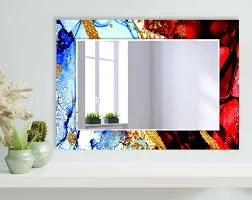

Understanding Decorative Glass Types
Decorative glass is an exquisite element of interior design and architecture, offering not just functionality but also artistic expression. It comes in various types, each with unique properties, patterns, and uses. This article explores some common types of decorative glass, examining their characteristics, applications, and the artistic implications of each.
1. Stained Glass
Stained glass is perhaps one of the most recognized forms of decorative glass, often associated with churches and historic buildings. This type of glass is made by adding metallic salts during its production process, which gives it vibrant colors. Artisans often cut the glass into various shapes and connect them using lead came, creating intricate designs and patterns. Stained glass works are not only visually stunning but also tell stories, often depicting religious narratives and historical events. They can be used in windows, doors, and even partitioning walls within homes.
2. Etched Glass
Etched glass is created through an acid etching process or sandblasting that leaves a frosted effect on the surface of the glass. This type of decorative glass can be customized to feature intricate designs, motifs, or even personalized lettering. Etched glass is commonly used in doors, shower enclosures, windows, and signage. Its opacity offers privacy while still allowing light to filter through, making it a popular choice for home and office environments. The versatility of etched glass allows it to blend seamlessly with various design styles, from modern to traditional.
Colored glass is produced by mixing different metal oxides during the glass-making process. The resulting glass is available in a wide array of colors and can be shaped into numerous forms. This type of decorative glass is often used in sculptures, vases, and other ornamental pieces. Besides its aesthetic appeal, colored glass can be used for architectural applications, functioning as a vibrant replacement for clear glass in windows or facades. The play of light through colored glass can create fascinating visual effects within a space.

4. Frosted Glass
Frosted glass is created through sandblasting or acid etching, resulting in a decorative surface that obscures visibility while allowing light to pass through. This type of glass is ideal for areas where privacy is essential, such as bathrooms or offices. Frosted glass can be used in various applications, including doors, windows, and partitions. Its simple elegance makes it a favorite among interior designers seeking to add a subtle decorative touch to a space while maintaining functionality.
5. Laminated Glass
Laminated glass consists of two or more layers of glass bonded together with a special interlayer, typically made from polyvinyl butyral (PVB). This type of glass can be decorated through the interlayer, allowing for a range of artistic expressions. Laminated glass provides safety, as it holds together when shattered, reducing the risk of injury. It is commonly used in skylights, glass floors, and decorative partitions. The ability to embed designs or images within the layers of laminated glass opens up vast possibilities for customization and artistic integration into building projects.
6. Mosaic Glass
Mosaic glass consists of small pieces of colored glass that are arranged to create a design or image. This technique has been used since ancient times, and today, it can be found in both artistic and architectural forms. Mosaic glass can be used in a variety of applications, from public artworks to residential interiors. The intricate patterns created through mosaic design can transform ordinary surfaces into extraordinary focal points. In modern architecture, mosaic glass installations can often be found in walls, walkways, and even ceilings.
Conclusion
Decorative glass types offer a multitude of options for adding beauty and creativity to spaces. Whether through the vibrant hues of stained glass, the subtlety of frosted designs, or the intricate patterns of mosaics, decorative glass has the power to enhance the aesthetic and emotional impact of environments. Understanding the unique properties and applications of various decorative glass types allows designers, architects, and homeowners to make informed choices that contribute to the beauty and functionality of their spaces. As innovations and techniques continue to evolve, the possibilities for decorative glass remain limitless.